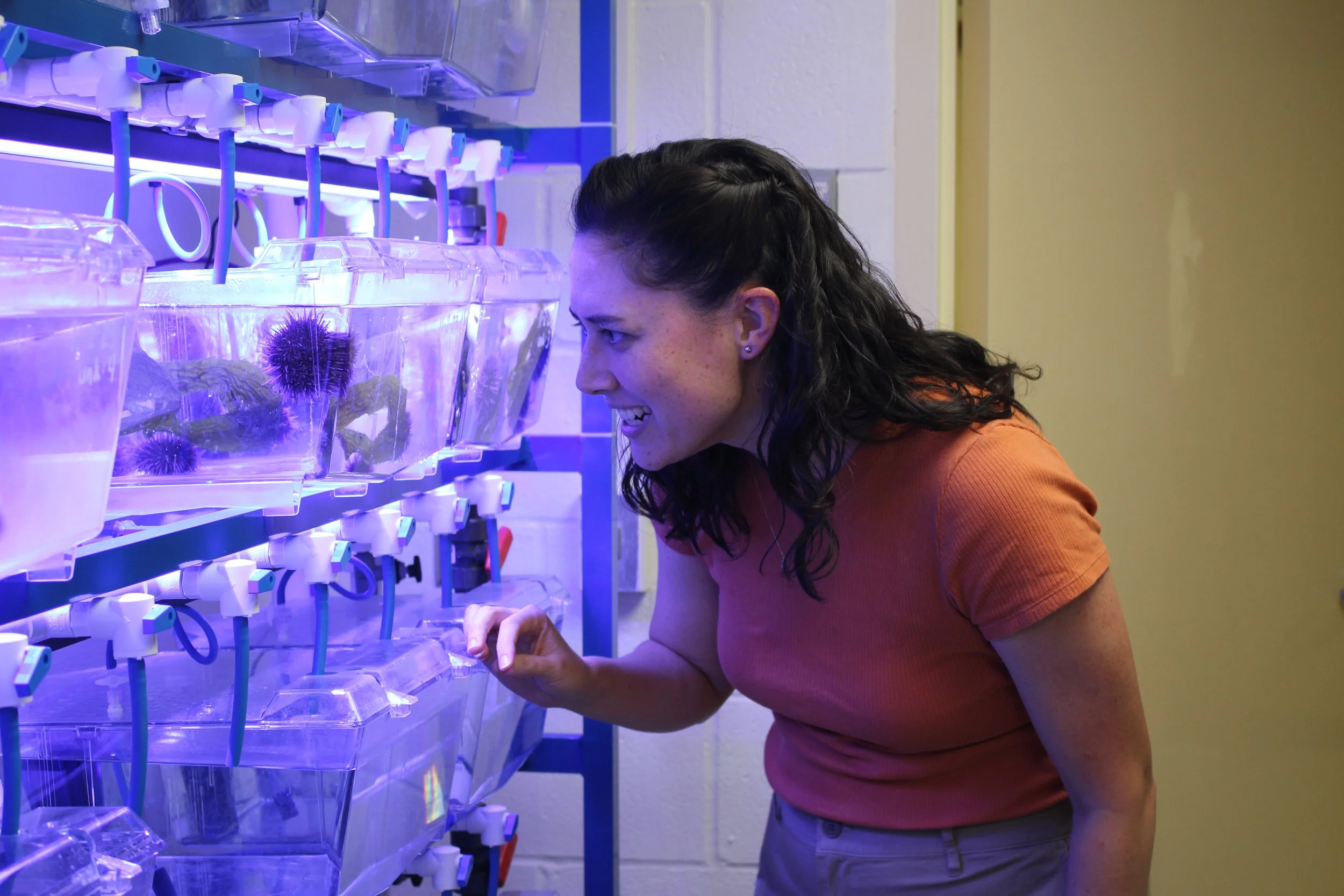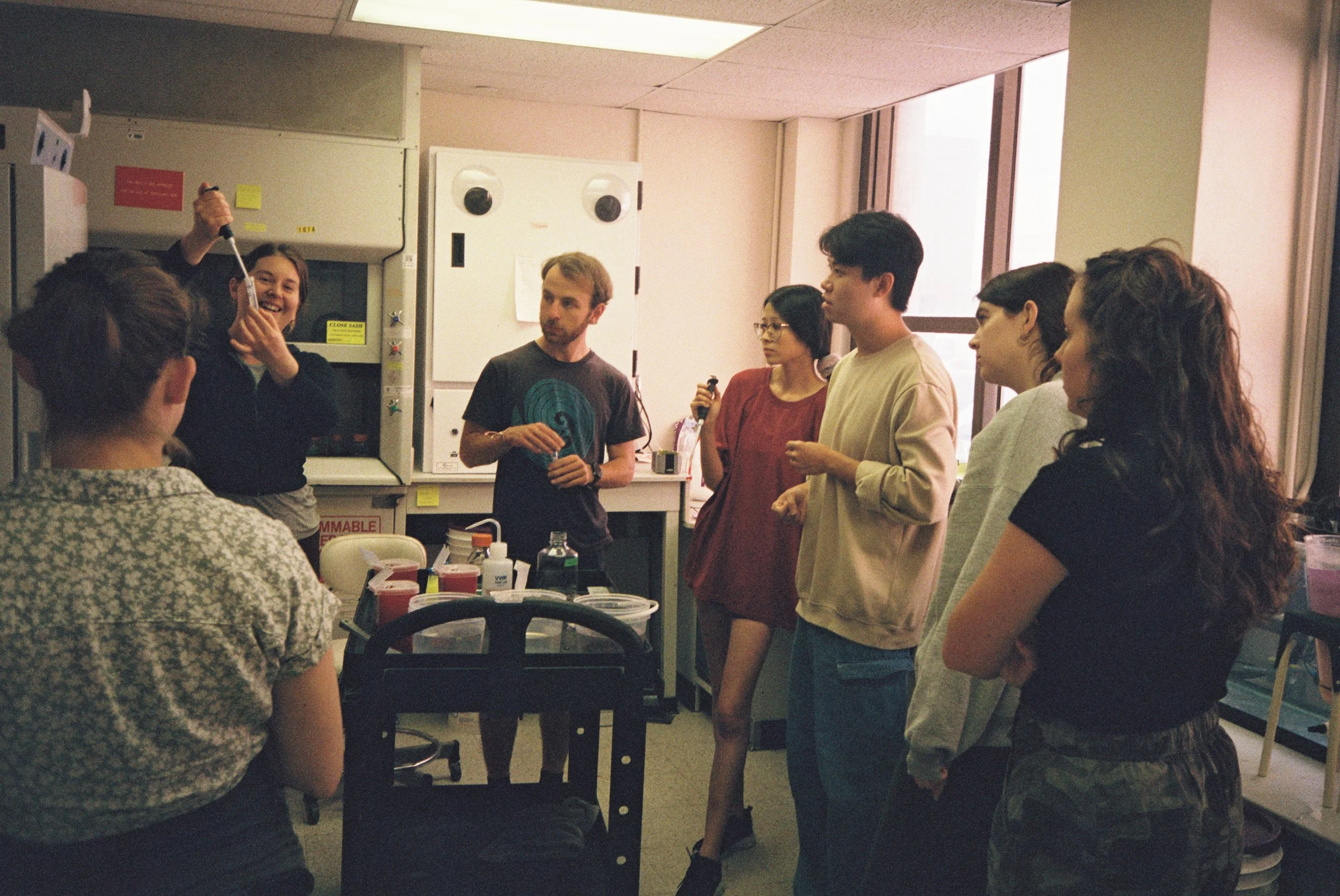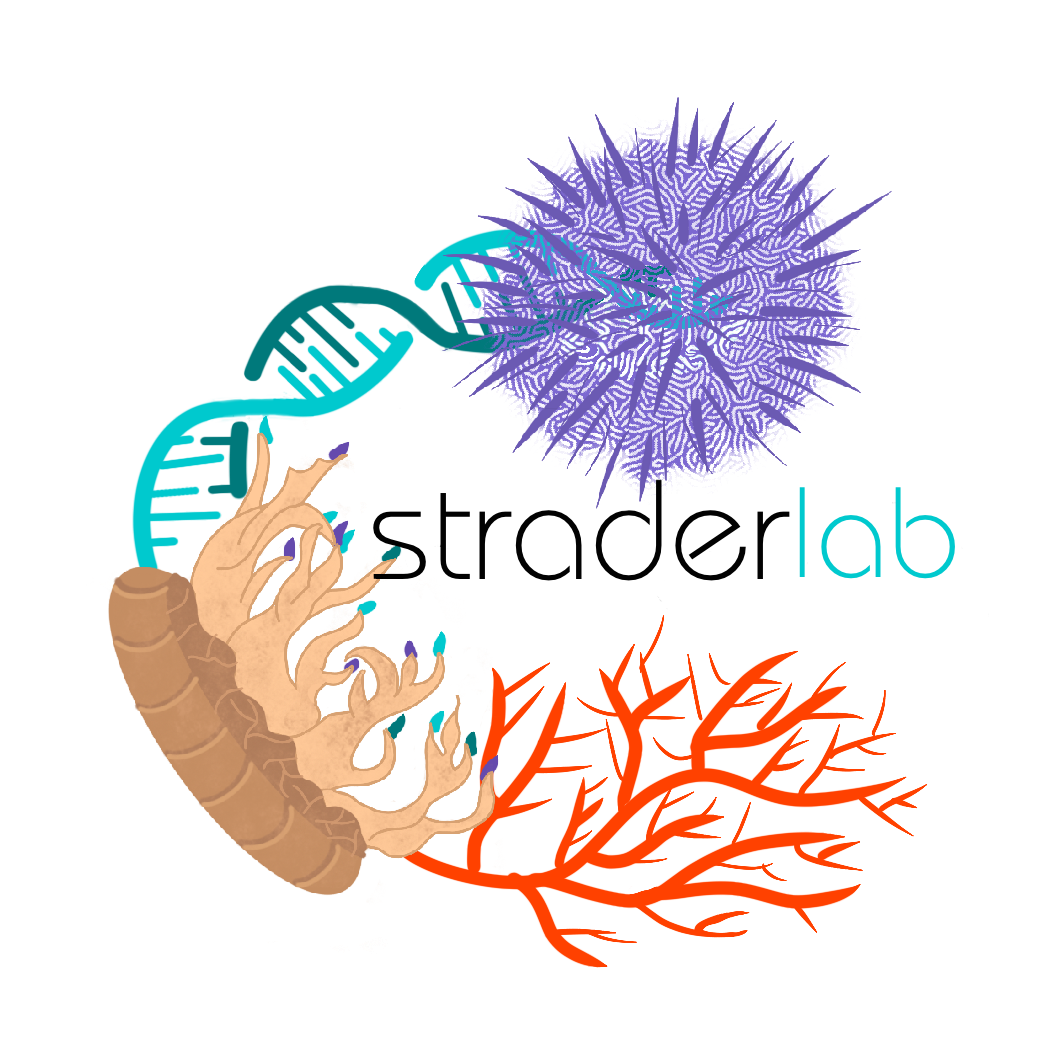
Current Work
My postdoc work in the Strader Lab uses purple sea urchins to investigate how environmental conditions during early life stages impact invertebrate development. This work looks at connections between genotypes and phenotypes by combining tools like ATAC-seq and RNA-seq with morphological analysis of the larvae.
Environmental conditions that alter development and growth can impact long term survival of the organism. We are especially interested in understanding how conditions like seawater temperature and bacterial content alter the growth of sea urchin larvae.
Purple sea urchins (Strongylocentrotus purpuratus) are not only a keystone species in their native Pacific Ocean kelp forest environments, they are also a classic model organism for development. We are investigating how both their internal and external microbiomes influence their growth as larvae. If their developing immune system is impacted, their resistance to pathogens could be compromised.
Many organisms can adjust their growth and development in response to conditions around them and this adjustment capability is referred to as “plasticity.” Especially in invertebrates, there is a lot we still don’t know about how plasticity is induced and controlled and whether the information can be passed to offspring (possibly through epigenetic mechanisms).
Relevant publications:
Microbial communities experienced during early development shape the host immune system and epigenome. Accepted at iScience. Amy L. Tan, Stephanie F. Hendricks, Elliana E. Carter, Katherine M. Buckley, Marie E. Strader.


